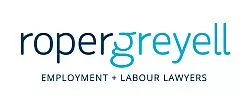On January 1, 2021, the Workplace Harassment and Violence Prevention Regulations, SOR/2020-130 came into force ("Regulations"), replacing Part XX of the Canada Occupational Health and Safety Regulations. The Regulations impose a number of new requirements on employers in the federal sector, some of which must be undertaken in order to develop and implement a Workplace Harassment and Violence Prevention Policy compliant with the Regulations.
Specifically, employers must conduct a workplace assessment jointly with the "Applicable Partner" (defined in the Regulations as the policy committee or, if there is no policy committee, the workplace committee or the health and safety representative). Employers would also be well advised to start working with the Applicable Partner to create a joint list of investigators approved to conduct any investigation required pursuant to the Regulations.
Employers who are party to a collective agreement which includes provisions respecting bullying and harassment will also need to take steps to ensure these provisions are compliant. For example, amendments to the Code specify that workplace health and safety committees cannot participate in investigations into reports of harassment and violence. Any agreement which provides for the involvement of health and safety committees in the conduct of the investigation itself would therefore be non-compliant with the Regulations and the Code.
Given the leg work required to complete a compliant policy, federal employers who have not already undertaken the workplace assessment, and revised or developed a Workplace Harassment and Violence Prevention Policy, should turn their minds to these new obligations.
What Employers Need to Know: The High-Points
- Workplace Assessment: the Regulations require employers to jointly undertake a workplace assessment to identify and address risk factors that contribute to violence in their workplace, and these risk factors must be listed in the employer's policy.
- Emergency Procedures: employers are also required to prepare emergency response procedures that must be implemented when an occurrence poses an immediate danger to the health and safety of an employee, and a summary of these must be included in the employer's policy.
- Support Measures: employers must make available to employees information respecting the medical, psychological or other support services available within their geographical area.
- Designated Recipient: employers must appoint a designated recipient to receive any notice of occurrence, and this individual or work unit must be trained prior to assuming their duties.
- Responding to Notice of Occurrence: when a notice of occurrence is received, the employer must contact the principal party, and the reporting witness if that is not the principal party, within 7 days of receipt of a notice of occurrence.
- Negotiated Resolution: under the Regulations parties are required to make every reasonable effort to resolve a notice of occurrence by negotiated resolution and this process must commence within 45 days after receipt of a notice of occurrence.
- Conciliation: the principal party and responding party may attempt to resolve an occurrence by conciliation at any time prior to receipt of the investigator's report if they agree to the process and the person to facilitate it; for example, conciliation could be facilitated by a mediator or an elder.
- Investigation: If a complaint is not resolved through negotiated resolution, an employer must investigate the incident if requested by the principal party.
- Investigators: must have certain training and can be anyone from a list jointly developed between the employer and the applicable workplace committee; or a person agreed to by the parties to the occurrence; or, failing that, an individual appointed by the Canadian Centre for Occupational Health and Safety.
- Time Limit: the entire resolution process for a notice of occurrence (negotiated resolution, conciliation, and/or investigation) must be complete within 1 year from the date of receipt of notice of occurrence, and this includes adoption and implementation of any recommendations agreed to following receipt of the investigation report.
- Training: employees must be trained on the new policy by January 1, 2022, and thereafter all new hires must be trained within 3 months from their date of hire, and existing employees at least once every 3 years.
- Unresolved Complaints: can now be referred directly to the Labour Minister (pursuant to s. 127.1(3) and 127.1(8)(d) of the Code) and the Minister must investigate unless satisfied that the complaint has been adequately dealt with.
- Privacy: health and safety committees and representatives cannot be provided with any information that is likely to reveal the identity of a person who was involved in an occurrence of harassment and violence without that person's consent, and the investigator's report must not reveal the identity of the parties involved in an occurrence, or the resolution process for an occurrence.
- Annual Reporting: by March 1st of each year, employers must provide the Labour Minister with an annual report which includes the number and type of occurrences of harassment and violence, the resolution processes undertaken for each, and the time taken to resolution.
- Record Keeping: the employer must keep records related to harassment and violence for 10 years.
- Reporting a Death: if an occurrence results in the death of an employee, an employer must report the occurrence to the Minister of Labour within 24 hours after becoming aware of the employee's death.
The content of this article is intended to provide a general guide to the subject matter. Specialist advice should be sought about your specific circumstances.


